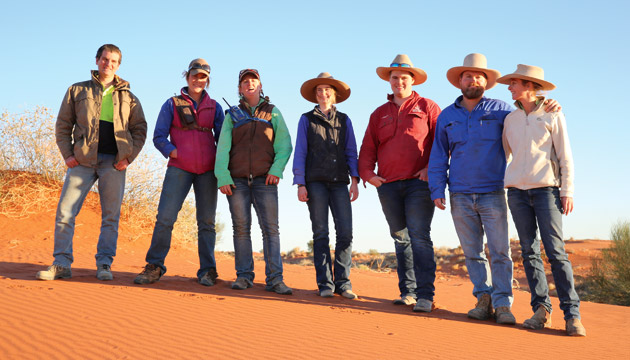The challenge of grazing in such a difficult environment is part of what keeps the Brook family tied to Cordillo Downs.
Story + photos Fiona Lake
Sunrise is a relatively silent affair on Cordillo Downs. Pre-dawn bird choruses are sparse in the middle of Sturt’s Stony Desert, where there are no permanent waterholes. With spectacular table-top hills as a distant backdrop to the century-old sandstone buildings, it’s easy to imagine a posse of jingling horsemen riding up the stony slope, dust puffs rising from hooves, to the strains of Ennio Morricone’s The Good, The Bad and The Ugly.
Cordillo was originally called Cardilla when settled by John Frazer in 1875. Amalgamated with Cadelga and Haddon Downs leases in 1903, the aggregation covers 7874 square kilometres. Thanks to married couple Anthony and Janet Brook’s conservative management, in all but the driest years Cordillo can comfortably maintain 7000 cattle. When dry times do bite, they shed numbers gradually by sending all the steers away to be fattened elsewhere, and then the weaners. “One beast to the square kilometre will get through for 12 months [without rain],” Anthony says. “It’s expensive to have to destock when dry, then buy back in when the season breaks.”
Janet says she and Anthony are land managers first and cattle managers second. “If the land isn’t in good condition, you don’t have the cattle. Conservative stocking won’t ‘win the gold’ in the really good seasons, but it is a lot kinder to the country and keeps the cattle in better condition. Otherwise, it can be really stressful when it’s dry. It takes months to muster a big place like this – you have to plan early.”
This story excerpt is from Issue #116
Outback Magazine: December/January 2018










